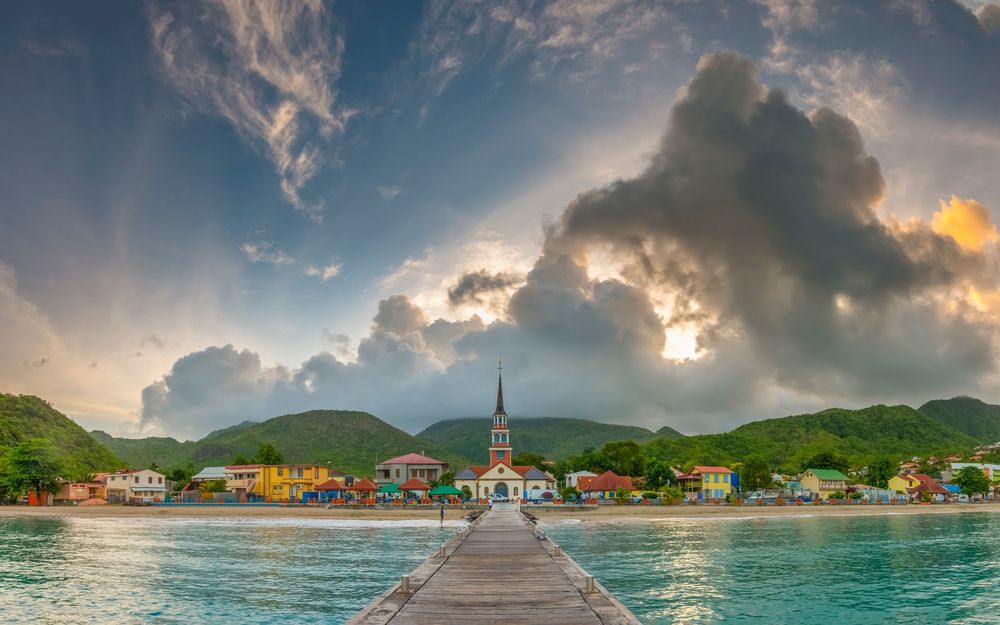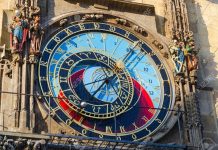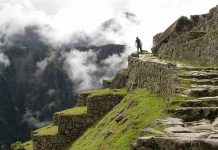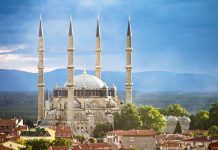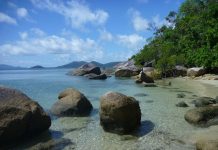Cruise ships dock at the Port of Fort-de-France, conveniently located in the heart of the city. Duty-free shops are scattered all around the port and there is easy road access to the rest of the island.
You can traverse Martinique’s diverse geography by any number of vehicles. Taxis are a popular and easy choice, but be advised that they are expensive. What’s more, they aren’t metered, so it’s better to settle on a price before you step into the cab.Buses come in two sizes on the island. There are the Grands busses, which hold around forty people at a time and travel all through the capital city of Fort-de France. Then there are taxis collectifs, which handle the longer trips beyond the city limits.
These taxis collectifs are privately owned, and you can recognize them by their “TC” sign.Ferry transportation between Fort-de-France and Pointe du Bout is inexpensive and convenient. A one-way ticket costs fewer than four dollars, while the round trip ticket runs about six dollars.Bicycles and motor scooters are another popular way around Martinique. In Fort-de-France, Funny (tel. 596/63-33-05) is a good place to rent them.
Martinique, in the Windward Islands, is one of the more unique islands in the Caribbean, both geographically and culturally. For one, it stands at the confluence of two major bodies of water, with the Atlantic Ocean to the north and east and the Caribbean Sea to the south and west. As a result, this tiny, 420 square mile island has two sets of completely different beaches.In addition, the land here is varied, with large stretches of flat land juxtaposed with large mountains.
The climate depends largely on how high up you are. If you visit the top of Mount Pelee, you would find yourself at an elevation of 4,656 feet! Even the island’s “smaller” hills check in at around 1,500 feet.Christopher Columbus discovered Martinique, as he did so many other Caribbean islands, in the late 15th Century. The island’s inhabitants at the time, the Carib Indians, called the island Madinina, or “island of flowers.” French settlers came three decades later, and except for a short span between 1794 and 1815, when the island was under British rule, Martinique has been a French property. Josephine Bonaparte was born on Martinique, in Trois-Ilets, and a statue of her stands today in the center of Fort-de-France.
To this day, even as some separatist groups are calling for greater autonomy, Martinique belongs to France, not as a colony, but as a full-fledged region. That means that although the island is separated from the Eiffel Tower by thousands of miles, the citizens of Martinique are French, with the same rights afforded a Parisian. The French franc is the official currency, French stamps are used for postage, and the “language of love” is the official tongue.The people of Martinique are mainly of African descent. Their colorful culture unique to the island includes a Mardi Gras celebration to rival that of New Orleans.
At the same time, the island has begun to embrace the tourism industry, with beautiful resorts dotting the pristine white sand beaches of Martinique’s southern coast.Fort-de-France is Martinique’s capital city. Its fairly central location on the island allows for excursions in pretty much any direction.
If you are lucky enough to be visiting Martinique in January or February, you will experience the magic of Carnival first-hand. Known as “vaval” locally, Carnival begins right after New Year’s Day. Every weekend is a parade of floats and dancing in the streets. You will be swept away, especially as the celebration builds towards Mardi Gras. On Ash Wednesday, the day after Mardi Gras, a funeral procession travels through the streets of Fort-de-France. The spirit of Carnival dies on Ash Wednesday, but not before one last celebration, as a huge fire is lit in La Savane, the town center. “Diablesses”, or female devils, dance more and more frantically before finally becoming subdued. This is the official end of Carnival, at least until the next year.
Any time of the year is the right time to enjoy La Savane. A statue of Napoleon’s wife, Josephine, the most famous native of Martinique, stands guard over the beautiful town square, and you can find plenty of shops and cafes in the immediate vicinity.
The ornate Bibliotheque Schoelcher, on the Avenue des Caraibes, (tel. 596/70-26-67) is the island’s central library, but your visit there is more about the architecture than the books, which are mostly in French. Observe the beautiful turquoise tile and hand-carved columns and keep in mind that the library has peculiar times, so call ahead if you are planning a visit.
The iron St. Louis Roman Catholic Cathedral was built in 1875. The prodigious church stands tall on rue Victor-Schoelcher, and is a must visit.
Fort fans will be more than taken care of on Martinique. Besides Fort St. Louis, which guards the port, there are also two forts, Fort Desaix and Fort Tartenson, on hills overlooking Fort-de-France.
Museum lovers will delight at the Musee Departemental de la Martinique, on 9 Rue de la Liberte (tel. 596/71-57-05), which has artifacts that date back centuries. The museum is adjacent to La Savane, and offers relics from the Arawaks and Caribs, Martinique’s original settlers. The museum is open every day except Sunday.
Gauguin Art Center and Museum, A museum celebrating the life and art of famous painter Gaugin with letters, artifacts and reproduction of the paintings inspired by the nearby Anse Turin.
House of Sugar, This museum features multi-media exhibits about the sugar industry on the island.
Musee Departemental de la Martinique, Fort-de-France, offering informational exhibits on the original, pre-Columbian inhabitants of the islands.
St. Pierre, The island’s most notorious resident, the volcano Mont Pelee, blew up in 1902 and destroyed this little coastal town, now a slightly morbid testimony to Mother Nature’s sometimes destructive power. Situated at the North End.
Valley of the Butterflies, dazzling to the eye with over 1,500 butterflies at this old 17th century plantation.
Best Beaches:
Les SalinesLes, one of the most popular beaches on the island, best known for its soft white sands and calm, sheltered waters.





















